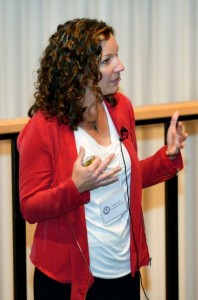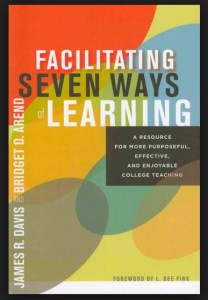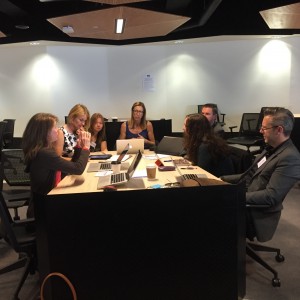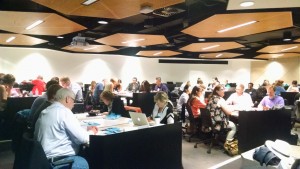by Roman Taraban, PHD, Texas Tech University
There is a strong focus in science, technology, engineering, and math (STEM) courses to solve problems (Case & Marshall, 2004). Does problem solving in STEM involve metacognition? I argue that the answer must surely be ‘yes’. That’s because metacognition involves monitoring the effectiveness of learning and problem-solving strategies and using metacognitive knowledge to regulate behavior (Draeger, 2015). But when does metacognition become part of problem solving, and how does it come about? Can we discern development in metacognitive monitoring and regulation? In this post, I will present some qualitative data from a study on problem-solving in order to reflect on these questions. The study I draw from was not about metacognition per se, however, it may provide some insights into the development of metacognition.
The study I conducted involved freshman engineering majors. These students were asked to solve typical problems from the course in mechanics in which they were currently enrolled (Taraban, 2015). Not surprisingly, students varied in how they began each problem and how they proceeded towards a solution. In order to gain some insight into their problem-solving strategies, I asked students to simply state why they started with the equation they chose and not some other equation, after they had solved the problems.
Students’ responses fell into at least three types, using labels from Case and Marshall (2004): surface, algorithmic, and deep conceptual. When asked why they started with their first equation, some students responded:
- “I don’t know, it’s just my instinct”.
- “No special reason. I’m just taking it randomly”.
- “It’s just habit.”
- “The first thing that came to my mind.”
Of interest here, these students did not appear to reflect on the specific problem or show evidence of modulating their behavior to the specific problemheir responses fit a surface learning approach: “no relationships sought out or established, learn by repetition and memorization of formulae” (Case & Marshall, 2004, p. 609).
Other students’ responses reflected an algorithmic approach to learning — “identifying and memorizing calculation methods for solving problems” (Case & Marshall, 2004, p. 609):
- “I am getting three variables in three unknowns so I can solve it.”
Here the student verbally expresses a more structured approach to the problem. The student believes that he needs three equations involving three unknowns and uses that as a goal. Students who take an algorithmic approach appear to be more reflective and strategic about their solutions to problems, compared to surface problem solvers.
Case and Marshall (1995) regarded both the surface and algorithmic pathways as part of development towards deeper understanding of domain concepts and principles, the latter which they labeled the conceptual deep approach to learning: “relating of learning tasks to their underlying concepts or theory” with the intention “to gain understanding while doing this” (p. 609). Basically, their suggestion is that at some point students recognize that a goal of learning is to understand the material more deeply, and that this recognition guides how they learn. Case and Marshall’s description of conceptual deep learning fits Draeger’s (2015) earlier suggestion that monitoring the effectiveness of learning and regulating one’s behavior is characteristic of metacognitive thinking. Once students reach this level, we should be able to more readily observe students’ intentions to understand the material and observe their overt attempts to grasp the material through their explicit reflection and reasoning. Examples of this type of reflection from my study could be gleaned from those students who did not jump directly to writing equations without first thinking about the problem:
- “If I choose the moment equation first, then directly I am getting the value of F. So in the other equations I can directly put the value of F.”
As students progress from surface to algorithmic to deep conceptual processing, there is certainly development. However, in the present examples that track that development, it is difficult to partial out students’ thinking about the problem content from their thinking-about-thinking, that is, their metacognitions. Draeger (2015) helps here by distinguishing between metacognition and critical thinking. The latter often requires domain-specific knowledge. Draeger suggests that “many students are able to solve complex problems, craft meaningful prose, and create beautiful works of art without understanding precisely how they did it” (p. 2). Basically, critical thinking is about methodology within a domain – e.g., the person knows how to format a narrative or select an appropriate statistical procedure, without necessarily reflecting on the effectiveness of those choices, that is, without metacognition. In the examples I provided above from my work with undergraduates on problem solving, there is invariably a mix of critical thinking and metacognition. Draeger’s distinction signals a need to better decouple these two distinct kinds of cognitive processes in order to better clarify the developmental trajectory of metacognitive processing in problem solving.
Finally, why do we observe such wide variance in students’ approaches to problem-solving, and, relatedly, to metacognition? One reason is that instructors may emphasize assessment and grades (Case & Marshall, 2004). As a consequence, students may focus more on gaining points for the correct answer rather than on the process. Welsh (2015) has suggested that course structure can act as a barrier to deeper learning: “high stakes assessments may overshadow resources designed for metacognitive development” (p. 2). Welsh found that students were more concerned with test performance than with reflecting upon their study strategies and implementing learning strategies recommended by the instructor.
How are we to understand this discord between concern with test performance and metacognition? At some level, when students set goals to do well on tests they are regulating their behavior. Metacognitive resources from the instructor may be in competition with students’ perceived resources (e.g., access to old tests, study buddies, cramming the night before). The instructor can facilitate change, but the leap from surface and algorithmic learner to deep conceptual learner must be undertaken by the student.
Passion and commitment to a topic are strong motivators to find the means to access and acquire deeper conceptual understanding. One measure of teacher success is class test performance, but another can be found in student comments. Here is one that I recently received that I found encouraging: Despite the fact that I was a bit uninterested in the subject matter, this was one of my favorite classes. By the end of the semester, not only was I interested in the subject matter, I was fascinated by it. Perhaps as instructors we need to facilitate good metacognitive practices but also nurture interest in what we teach in order to motivate students to pursue it more deeply through more effective metacognitive practices.
References
Case, J., & Marshall, D. (2004). Between deep and surface: procedural approaches to learning in engineering education contexts. Studies in Higher Education, 29(5), 605-615.
Draeger, J. (2015). Two forms of ‘thinking about thinking’: metacognition and critical thinking. Retrieved from https://www.improvewithmetacognition.com/two-forms-of-thinking-about-thinking-metacognition-and-critical-thinking/ .
Taraban, R. (2015, November). Transition from means-ends to working-forward problem solving. 56th Annual Conference of the Psychonomic Society. Chicago, IL.
Welsh, A. (2015). Supports and barriers to students’ metacognitive development in a large intro chemistry course. Retrieved from https://www.improvewithmetacognition.com/supports-and-barriers-to-students-metacognitive-development-in-a-large-intro-chemistry-course/




